
Starting in 1877, steam locomotives of the Montreal, Portland & Boston Railway run trains between Longueuil, Chambly, Richelieu, Marieville, Sainte-Angèle-de-Monnoir, Farnham and Frelighsburg. In 1882, the company builds a new railway line between Marieville and Saint-Césaire. Afterwards, the line will be operated by the South Eastern Railway until July 1, 1891. This firm later passes under the control of the Central Vermont Railway. Several years on, the Montreal & Southern Counties Railway will obtain the right to electrify this line. From September 27, 1913, it will operate an electric streetcar service to Marieville. This railway will be shared by steam trains and electric trains until August 31, 1925.
In 1877, the Marieville railway station is built by the Montreal, Portland & Boston Railway on Lot 215 as shown on the town’s cadastral map of 1882. It is a two-story wooden structure with a pointed roof and sheathing of horizontal wood panels. On the side facing the tracks, the building has a canopy to shelter the boarding platform and the doorways. At the back of the building, on the second floor, there is a covered balcony for the use and comfort of the station master and his family. At this type of station, which is also found in Saint-Césaire, the station master and his family live on the second floor of the building. The first floor is divided into three sections. On the left, the waiting room with benches and a coal-burning stove. In the middle, the office of the station master with its ticket counter and telegraph machine. On the right, the merchandise warehouse with access to the platform.
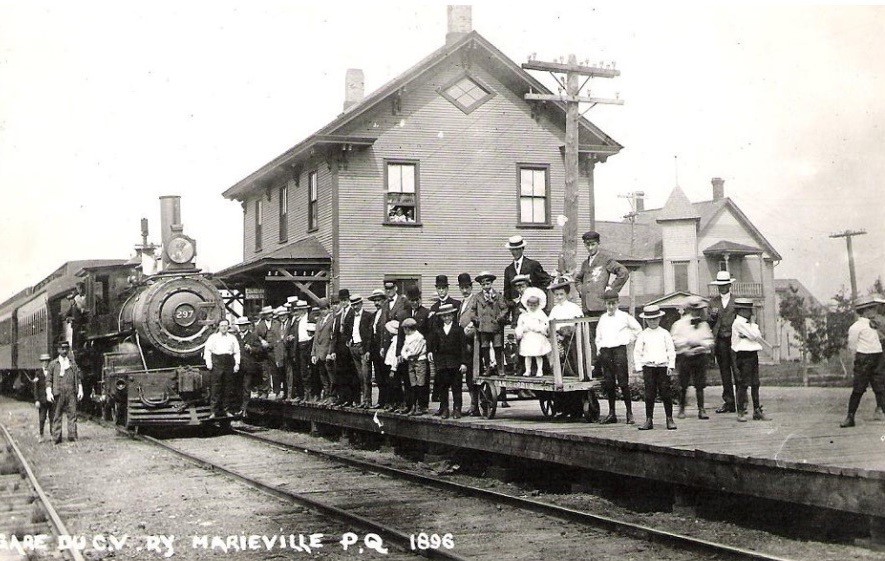
In 1896, Marieville residents assemble beside Steam Locomotive 297 before it departs their station of the Central Vermont Railway.
In the afternoon of Saturday, September 27, 1913, the citizens of Marieville see the first electric streetcars arrive at the station. On board the train are the directors and officers of the Montreal & Southern Counties Railway, with their families joining them on the journey. To mark the importance of the day, a celebration has been organized. First to speak is lawyer and city clerk J. Émile Ostiguy, who addresses an official welcome to the visitors. Then, a reception party is held at the home of Edmond Robert, Member of Parliament for the District of Rouville. Later, a sumptuous banquet is provided in a public hall. Around 100 guests are present, with many speeches delivered by the dignitaries in attendance. After this banquet, the local brass band and volunteer firefighters lead a parade which starts at the post office and marches through the streets of the town. At 6:20 pm, the electric train returns to Montreal. The rail link between Montreal and Marieville is now in service, with six departures a day from each of the two stations.
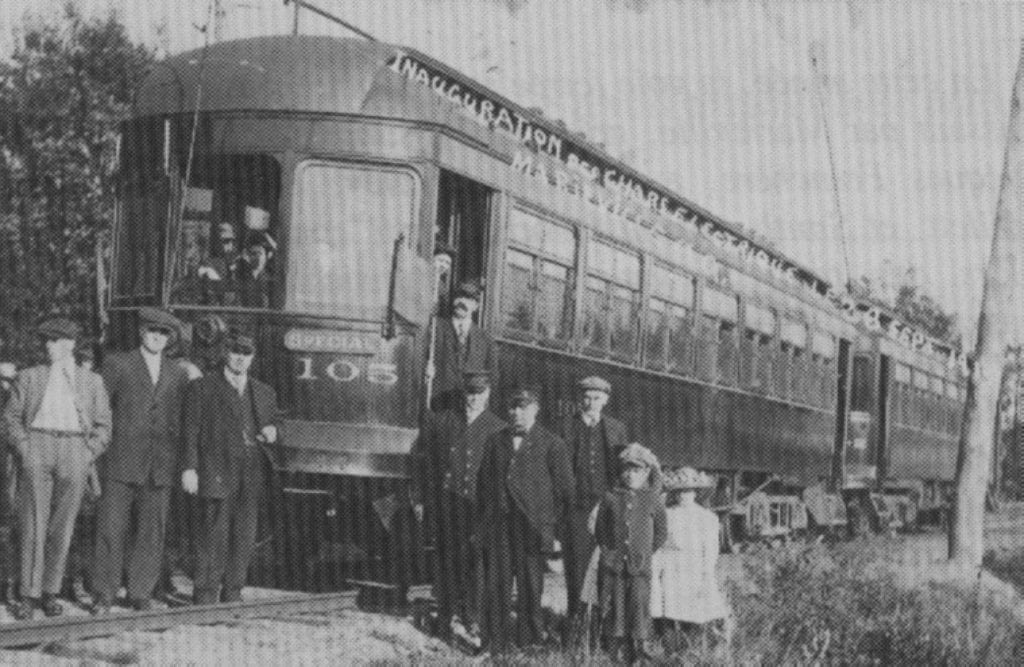
Officers and guests pose at the head of Car 105 in this souvenir photo from September 27, 1913, showing the arrival of the first electric train in Marieville. (The handwritten date in the photo is incorrect.)
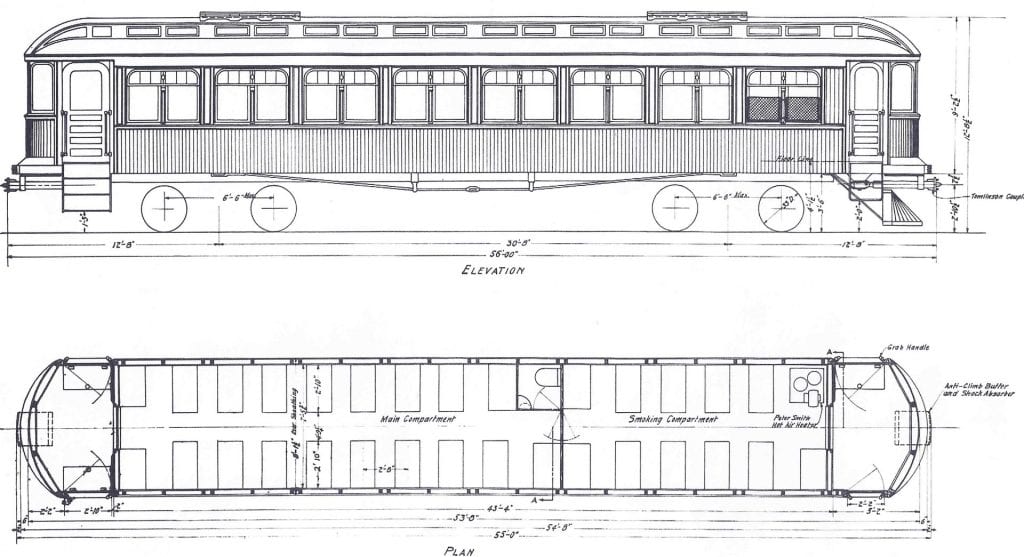
Elevation and plan from 1916 of an electric streetcar for passengers or Interurban Motor Passenger Car.
“I can even say I had the privilege of travelling by steam train to Montreal around 1912. But most of all I benefited from the electric-powered streetcar service of the Montreal & Southern Counties Railway. Its first train arrived in Marieville on September 27, 1913. I used to ride these trains all the time! I don’t remember the earlier ticket price, but around 1940, we could buy a 50-trip pass for $9.75. Although it went against the rules, we would often lend each other this pass, as a way of getting a better deal! Generally, each car had its own engine. The streetcar received its electricity from an overhead power line. Two rows of benches inside were enough for about forty passengers. Trains crossed the Victoria Bridge on the northern track. The terminus in Montreal was a small station called D’Youville. Until 1940, this train service was the most comfortable and the most popular option. There was no access from one compartment to another. Often, the compartments were full, with several people having to make the journey standing up. But customers were slowly drawn away by the increasing number of automobiles on the road and by the introduction of an intercity bus service. |
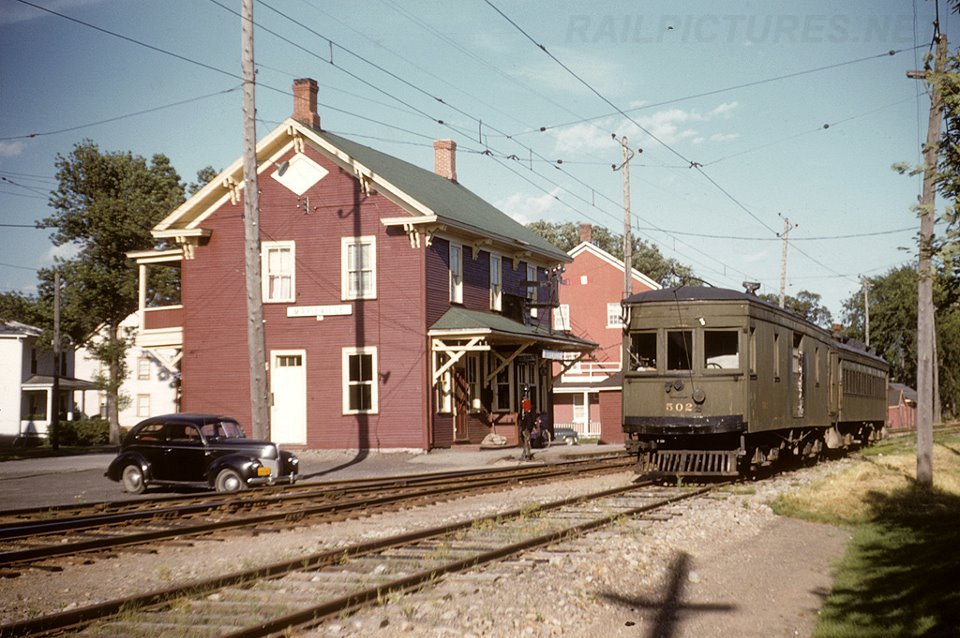
Milk & Express Car 502 and a passenger streetcar in front of Marieville Station.
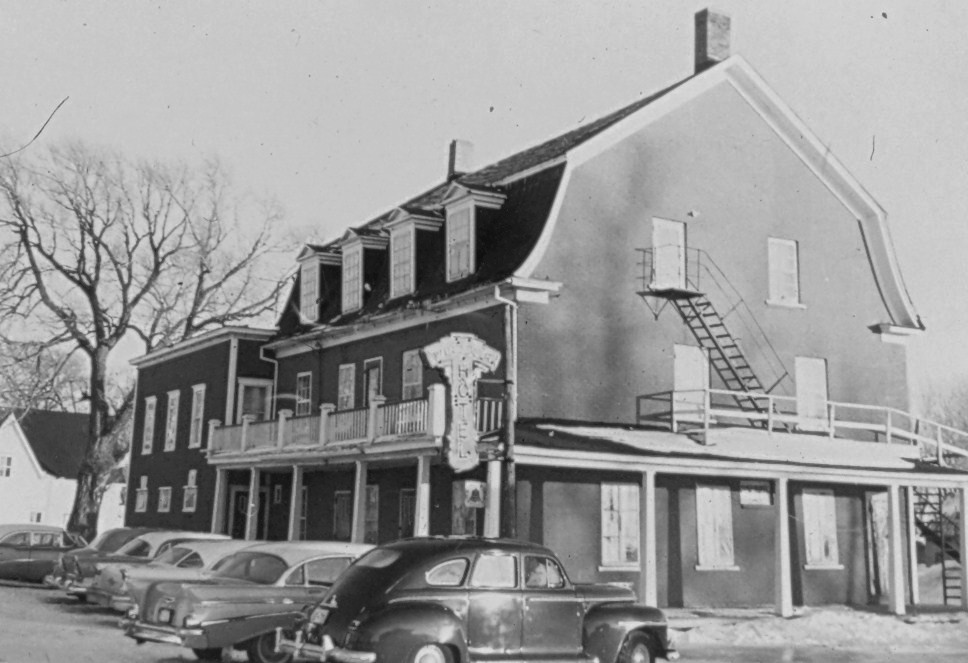
The Windsor Hotel in Marieville, also known as the Station Hotel (Hôtel de la Gare).
In the smaller towns, the arrival of a station building, and its railroad service encourages not just factories and farming cooperatives to build in the vicinity, but hotels as well. Marieville is no exception. For several decades, Marieville hotels and inns will live in symbiosis with the train station: the Windsor Hotel, the Central Hotel, the Rouville Hotel, the Marieville Hotel, the Grand Central Hotel, etc. |
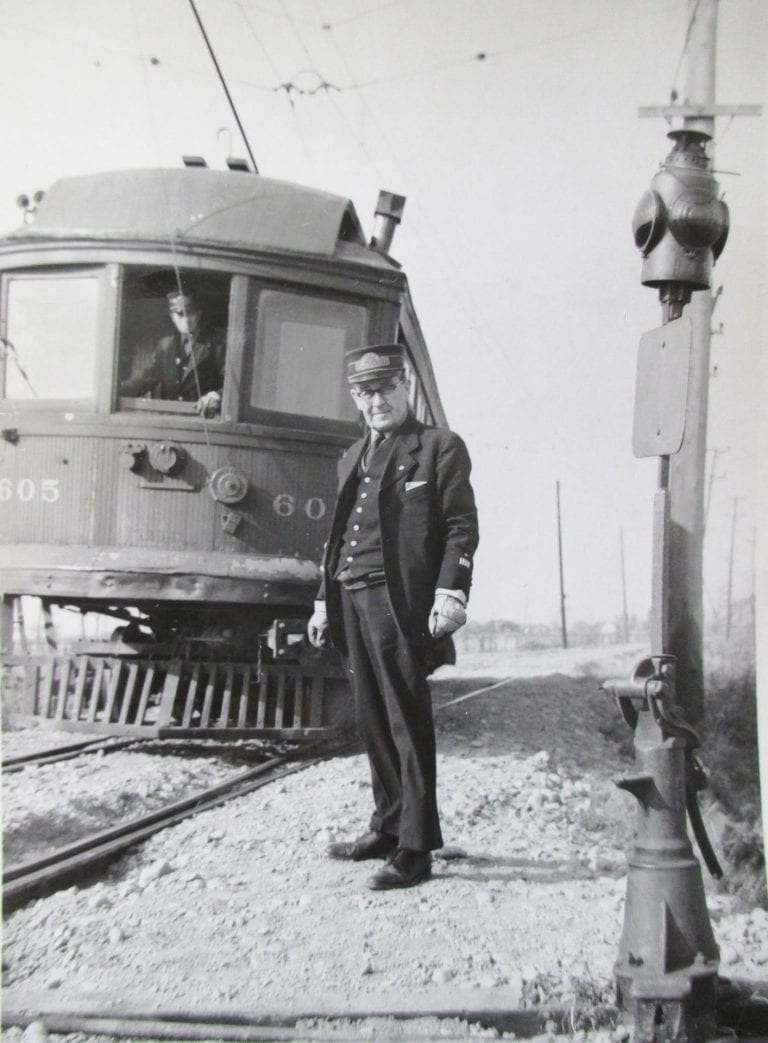
Conductor Lionel Forest of Marieville stands before Car 605 on its last trip to the town, October 13, 1956. Motorman Adélard Beauchemin, also of Marieville, looks on from his post at the streetcar controls.
On October 13, 1956, the electric streetcars stop running and the railway station closes its doors. In 1960, the building will be sold for the sum of 50 dollars. It will later be moved to Girouard Street and converted into a duplex. The electric trains have served the citizens and businesses of Marieville for 43 years.



Research and text
Gilles Bachand, historian
Société d'histoire et de généalogie des Quatres Lieux
References and photographs (2020)
Archives of the Société d’histoire et de généalogie des Quatre Lieux
Archives of the Société d’histoire de la Seigneurie de Monnoir